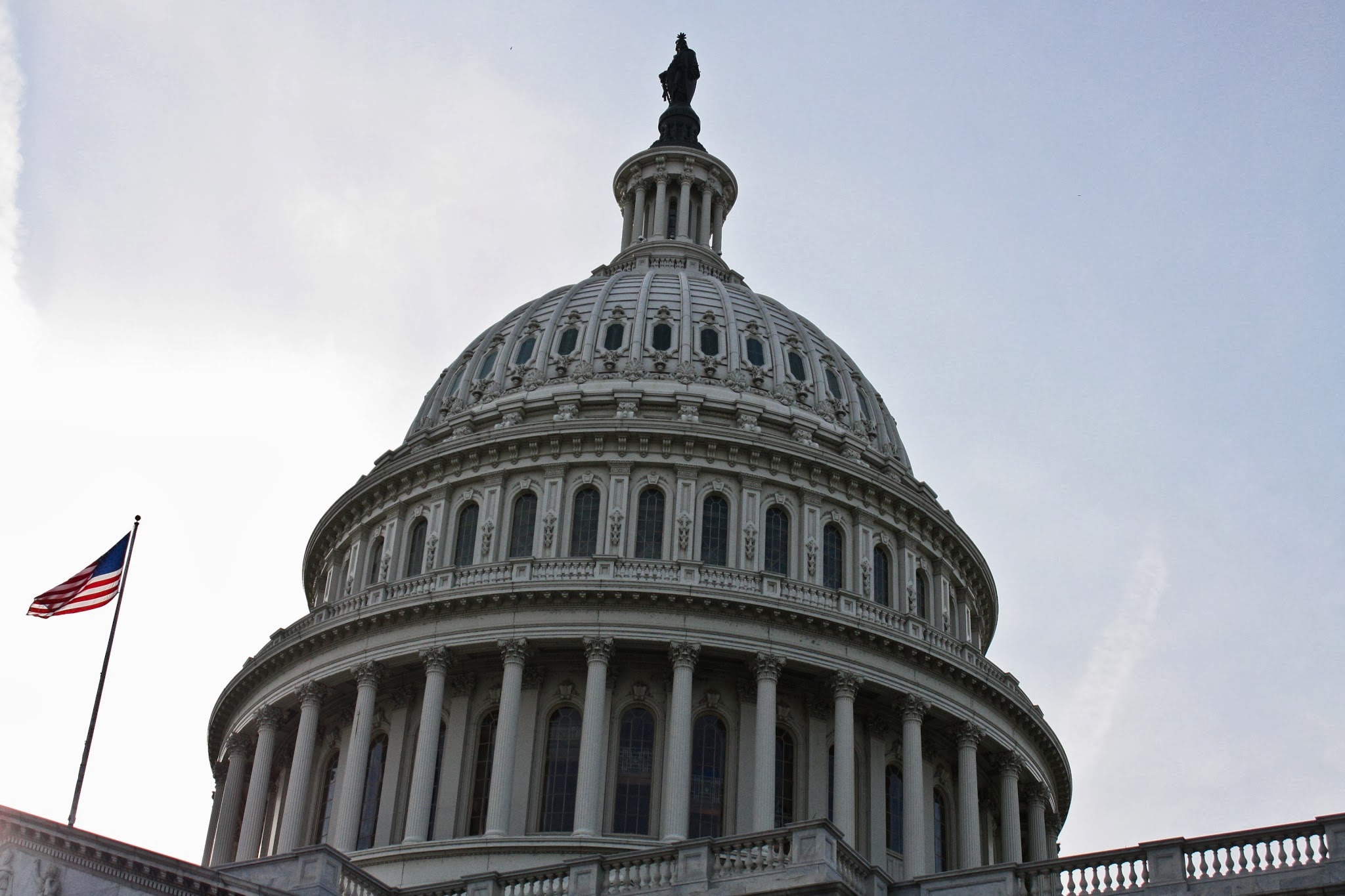I’ve attended a lot of DC meetings, some (ahem) more useful than others. I recently attended a truly astounding one. By the time I left I felt smarter and more prepared than ever to protect pretty much everything I care about in this new post-2016-election world. And…I wrote it all down right here.
The experts* focused on two incredibly important and complex legislative vehicles that will majorly impact our causes next year: The Congressional Review Act and Budget Reconciliation.
Lucky for me and you, these smartypantses translated the wonk into English, and we’ve put together some of the top takeaways here. (And in case it’s not already obvious, I’m not a congressional procedure expert, so consider this a nerdy lay(wo)man’s digest.)
* Experts = Martin Paone, Deputy Assistant to the President and Senate Liaison for the Obama White House; Ellen Nissenbaum, SVP for Govt Affairs for Center for Budget and Policy Priorities; Curtis Copeland, former analyst with Congressional Research Service; and Rob Weissman, President of Public Citizen.
The Congressional Review Act (CRA)
The CRA is the weapon Congress may use to undo a lot of the good that’s been done in the closing days of the Obama presidency. It gives a simple majority in Congress the power to reverse any rule finalized by the Obama administration in the past few months.
People refer to the CRA as a “scorched-earth” option. Congress can subject any executive rule finalized by June 13, 2016 or later to a vote, and if a majority votes to disapprove it… poof! The rule isn’t just repealed — it’s retroactively disabled, treated as if it never existed, and prohibited from being put in place in the future unless Congress reauthorizes it.
That means that if Mitch McConnell decides he doesn’t like Obama-era rules about arctic drilling, funding for Planned Parenthood health centers, or paid sick leave, those rules are at risk. He can schedule a vote, rally his caucus, and wave his CRA wand to make them vanish.
The CRA approach to legislating has only been used once in its 20-year history (in 2001 under President George W. Bush). Since CRAs can be vetoed, it only makes sense to use them when the President is of the same party as both houses of Congress. (This is the part where you start to worry…)
It gets worse. The CRA is different than a regular bill because it gives Congress expedited procedures and cannot be filibustered. Yep, that means only 51 votes are needed.
What else sucks about the CRA? Members can appeal to retroactively classify other things (like “guidance”) as rules that weren’t originally proposed as a rule. This has happened 11 times. Then, those “new” rules could also face CRA and be instantly repealed.
How does the CRA approach work?
Since it’s Congress, there’s a lot of wonky detail on exactly how timing rules work for this. I won’t pretend to understand all of it, but here is what you need to know:
- Short story: The new Congress starts on January 3, and they only have 60 working days to use the CRA. However, there are manipulations that can be made to the timing rules. Assessing the schedule/calendar, experts estimate the new Congress will have roughly until April or May 2017 to use the CRA. Based on how the schedule works, we will likely start hearing about moves related to the CRA starting January 24.
- Added bonus: They can only use the CRA on rules that were finalized after roughly June 13, 2016 (which covers about 1,500 current rules). If the rule was finalized before then, it cannot face the CRA.
- Congress can’t repeal more than 1 rule at a time, and each rule gets 10 hours of debate.
- However, a huge threat is that Congress could pass the “Midnight Rule Relief Act” which would allow dozens of rules to be folded into a single CRA, and thus make it much easier to knock out a bunch of rules at once. It goes without saying that we should defend against this.
Why should you care?
Here are some examples of rules finalized after June 13, 2016 that the new Congress and Trump White House could gut:
- DOL’s paid sick leave rule
- Emissions standards for new oil and gas drilling on wildlife refuges
- DOI’s arctic drilling rule
- EPA’s methane and solid waste standards
- DOE’s rule around federal loan forgiveness for schools that have been shut down
- Restrictions on predatory payday lenders
- Online privacy/data protections for consumers
- Energy efficiency standards for fridges, furnaces, trucks and more
- Non-discrimination rules for federally-funded health programs and homeless shelters
- An anti-corruption rule requiring corporations report payments to foreign governments
- I mean, there are like 1,500! Chances are good you care about, oh, about 1,000 of them. ONE THOUSAND.
What can you do?
Keep reading. I’ll get to that after the Budget Reconciliation section because the answer is similar…
Budget Reconciliation
Budget reconciliation is the flip-side of the CRA: instead of using it to simply reverse Obama rules, it will allow the incoming Congress and president to push their own agenda.
Like the CRA, all it takes is a simple majority. No filibusters and no 60-vote cloture stop-gap in the Senate. Buckle up.
Budget reconciliation was intended to ease the way for Congress to reduce the deficit. But in 2001 and 2003 Congress used it to push forward Bush’s tax cuts for the wealthy and ended up raising the deficit. Just saying.
Democrats also used budget reconciliation to help pass Obamacare in 2010, so think of it like a Gremlin (either the cute movie monster or the car): not inherently evil, but definitely dangerous under the right conditions.
What does budget reconciliation do?
Budget reconciliation can only be used to make changes to entitlements (Medicaid, SNAP, etc.) and revenues (various taxes and tax exemptions). Normal line-item appropriations, earmarks and Social Security are off limits.
The budget committees start the process and work behind the scenes with the chairs of other committees to make cuts to programs to meet a budget level. In other words, the public won’t know how bad the cuts could be until it’s put forward to the floor at the end.
Once the bill is on the floor it is extremely hard to amend and almost impossible to stop. Remember, budget reconciliation bills cannot be filibustered and get only 20 hours of debate before a vote.
Why should you care?
When Congress comes back on January 3, they’ll take up a budget resolution for the FY 2017 budget. This process will probably move fairly quickly, and the result will be a conference agreement for a budget reconciliation on key issues that we all care about.
It’s likely the behind-the-scenes budget reconciliation in 2017 will involve changes like repealing the Affordable Care Act and defunding Planned Parenthood. There won’t be hearings or bills to add amendments to. It’ll just happen.
This will obviously be a big moment for engagement. But, don’t take your eye off the ball, we’re just getting started.
After the conference agreement is reached between the House and Senate on the FY 2017 budget, the real “fun” begins. Trump must put forward some kind of budget for FY 2018. This is the real roadmap for Congress’ agenda, and will include the whole kit and kaboodle: revenues, entitlements and discretionary spending.
Once Trump presents his budget plan, Congress must generate a *second* budget reconciliation bill which will…uh…reconcile the two budgets. It’s expected that this process will be resolved by late summer or early fall 2017.
While it’s unlikely that the final budget would include ALL of these topics, here are a few of the policies it could affect: 1) ACA replacement; 2) tax reform; 3) entitlement reform (Medicaid, Medicare, SNAP), and 4) the debt ceiling.
So, uh, now what?
Thanks Cosa, now I’m curled up in the fetal position, which is also making it hard to read the rest of this post. So, what can we actually do about this terribleness?
1) Speak up and move quickly! Collaborate and share messaging with partners and strange bedfellows. Our strength will be in numbers now more than ever, and the next few months of defense will move fast. Focus your messaging on real-life implications and find spokespeople who would become victims of these changes NOW. While it can be easy to attack the process, don’t make that part of your public messaging. It simply will not resonate as well as emphasizing the people and communities who will be devastated by these changes. Tactically, we know that Senate offices care the most about their phones ringing off the hook. Mobilize your lists to use lunch breaks/team meetings/boring Tinder dates to dial those Senators and voice opposition.
2) Know the drill. We can’t afford to lose just because we don’t know the technical details and the other side does. You can’t spell know without wonk, people.
Let’s be real: your nonprofit or campaign’s resources and capacity are going to be stretched the next couple months. So you need to prioritize. These are the key questions you should be asking to guide those decisions:
- Does this change set a dangerous precedent?
- Is there change being done that cannot be undone? For instance, a permanent structural change like privatizing/changing to block-grants to programs like Medicare, SSI, SNAP, etc. vs. cuts to budgets that can be fixed down the road.
- Pick the single most grave change they are trying to make and focus on beating that.
3) Shore up your allies. Don’t assume we’ve got all the Dems on our side! Make sure your champs and swings are with you.
4) Never, ever, ever give up. It won’t be pretty, but now’s not the time to throw in the towel. Trump ran a campaign based on promises to “drain the swamp” and eliminate special interests from government. Hold him accountable and point out his hypocrisy in budget policies that only benefit big business and the 1% like him.
Still nervous? Us, too. But remember: you’re not alone. You have friends and allies all around you. I’m one of them, and I work with about 100 others at M+R. Let’s get ready, and let’s get to work.
Even more info can be found at Coalition for Sensible Safeguards, and the Center for Budget and Policy Priorities. And another big round of thanks to Martin Paone, Ellen Nissenbaum, Curtis Copeland, and Rob Weissman for their expert guidance and for helping us make sense of all of this!
The two biggest (and wonkiest) legislative threats your nonprofit faces in the new Congress, explained. https://t.co/MEadA8nlTP
— M+R (@MRCampaigns) December 15, 2016



